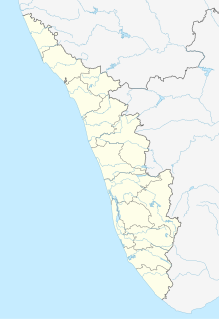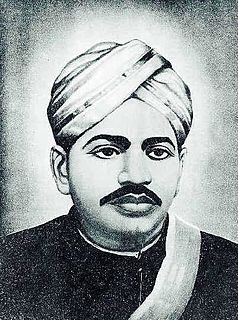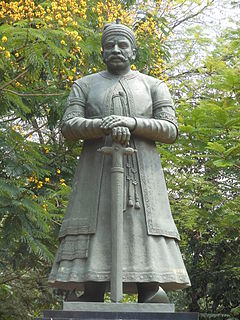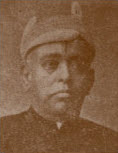Related Research Articles

Kochi, also known as Cochin, is a major port city on the south-west coast of India bordering the Laccadive Sea. It is part of the district of Ernakulam in the state of Kerala and is often referred to as Ernakulam. Kochi is the most densely populated city in Kerala. As of 2011, it has a corporation limit population of 677,381 within an area of 94.88 km² and a total urban population of more than of 2.1 million within an area of 440 km², making it the largest and the most populous metropolitan area in Kerala. Kochi city is also part of the Greater Cochin region and is classified as a Tier-II city by the Government of India. The civic body that governs the city is the Kochi Municipal Corporation, which was constituted in the year 1967, and the statutory bodies that oversee its development are the Greater Cochin Development Authority (GCDA) and the Goshree Islands Development Authority (GIDA).

The Kingdom of Travancore (Thiruvithamkoor) was an Indian kingdom from 1500 until 1949. It was ruled by the Travancore Royal Family from Padmanabhapuram, and later Thiruvananthapuram. At its zenith, the kingdom covered most of modern-day central and southern Kerala with the Thachudaya Kaimal's enclave of Irinjalakuda Koodalmanikkam temple in the neighbouring Kingdom of Cochin, as well as the district of Kanyakumari, now in the Indian state of Tamil Nadu. The official flag of the state was red with a dextrally-coiled silver conch shell at its center. In the early 19th century, the kingdom became a princely state of the British Empire. The Travancore Government took many progressive steps on the socio-economic front and during the reign of Maharajah Sri Chithira Thirunal Balarama Varma, Travancore became the second most prosperous princely state in British India, with reputed achievements in education, political administration, public work and social reforms.

Kingdom of Cochin was a late medieval kingdom and later princely state on the Malabar Coast, South India. Once controlling much of the territory between Ponnani and Thottappally, the Cochin kingdom shrank to its minimal extent as a result of invasions by the Zamorin of Calicut. When Portuguese armadas arrived in India, Cochin was in vassalage to Zamorin and was looking for an opportunity to break away. King Unni Goda Varma Tirumulpadu warmly welcomed Pedro Álvares Cabral on 24 December 1500 and negotiated a treaty of alliance between Portugal and the Cochin kingdom, directed against the Zamorin of Calicut. Cochin became a long-time Portuguese protectorate (1503–1663) providing assistance against native overlords. After the Portuguese, the Dutch East India Company (1663–1795) followed by the English East India Company, protected the Cochin state. Even today, the full official designation of the Raja of Cochin is “Perumpadappu Gangadhara Veera Kerala Thrikkovil Adhikarikal”.

Travancore-Cochin or Thiru-Kochi was a short-lived state of India (1949–1956). It was originally called United State of Travancore and Cochin and was created on 1 July 1949 by the merger of two former Princely States, the kingdoms of Travancore and Cochin with Trivandrum as the capital. It was renamed State of Travancore-Cochin in January 1950.

Pattom Thanu Pillai was a participant in the Indian independence movement who later served as the Chief Minister of Kerala from 22 February 1960 to 25 September 1962. He was known as the 'Bhishmacharya' of Kerala politics.

The High Court of Kerala is the highest court in the Indian state of Kerala and in the Union Territory of Lakshadweep. It is located in Kochi. Drawing its powers under Article 226 of the Constitution of India, the High Court has the power to issue directions, orders and writs including the writs of habeas corpus, mandamus, prohibition, quo warranto and certiorari for ensuring the enforcement of the Fundamental Rights guaranteed by the Constitution to citizens or for other specified purposes. The High Court is empowered with original, appellate and revisional jurisdiction in civil as well as criminal matters, and the power to answer references to it under some statutes. The High Court has the superintendence and visitorial jurisdiction over all courts and tribunals of inferior jurisdiction covered under its territorial jurisdiction.

Vallinayagan Olaganathan Chidambaram , popularly known by his initials, V.O.C., also known as Kappalottiya Tamizhan "The Tamil Helmsman", was a Tamil Freedom fighter and leader of Indian National Congress. He was a disciple of Bal Gangadhar Tilak.

The Thampis and Kochammas are the sons and daughters of the maharajahs of Travancore and their morganatic wives belonging to Nair caste and its sub castes.

Dharma RajaKarthika Thirunal Rama Varma was the Maharajah of Travancore from 1758 until his death in 1798. He succeeded his uncle Marthanda Varma, who is credited with the title of "maker of modern Travancore". During his reign Dharma Raja not only retained all the territories his predecessor had gained but administered the kingdom with success. He was addressed as Dharma Raja on account of his strict adherence to Dharma Sastra, the principles of justice by providing asylum to thousands of Hindus and Christians fleeing Malabar during the religious and military onslaught of Tipu Sultan.

Velayudhan Chempakaraman Thampi (1765–1809) was the Dalawa or Prime Minister of the Indian kingdom of Travancore between 1802 and 1809 during the reign of Bala Rama Varma Kulasekhara Perumal. He is best known for being one of the earliest individuals to rebel against the British East India Company's supremacy in India.

Thrissur is the administrative capital of Thrissur District situated in the central part of Kerala state, India. Thrissur district was formed on 1 July 1949. It is an important cultural centre, and is known as the Cultural Capital of Kerala. It is famous for the Thrissur Pooram festival, one of the most colourful and spectacular temple festival of Kerala. From ancient times, Thrissur has played a significant part in the political, economical and cultural history of Indian sub continent and South East Asia. It has opened the gates for Arabs, Romans, Portuguese, Dutch and English. Thrissur is where Christianity, Islam and Judaism entered the Indian sub continent, when Thomas the Apostle arrived in 52 CE and the location of country’s first Mosque in the 7th century.

The Nair Brigade was the army of the erstwhile kingdom of Travancore in India. Nairs were a community of the region. The personal bodyguard of the king Marthanda Varma (1706–1758) was called Thiruvithamkoor Nair Pattalam. The Travancore army was officially referred as the Travancore Nair Brigade in 1818.
Subramaniam, Subramanyam or Subramanian is a South Indian male given name. Due to the South Indian tradition of using patronymic surnames it may also be a surname for males and females. The etymology of the name is unknown; however, a common translation is "dear to Brahmins", or "of good deeds." An alternative proposed translation is derived from merging two common Sanskrit/Tamil words supri-ya (सु), meaning "good" or "dear," and mani-ya, meaning jewel; the name translates loosely as "worthy jewel". Subramaniam is one of the many names of the Hindu god Murugan.
K. N. Chandrasekharan Pillai is an Indian legal academic. He is the former director of the Indian Law Institute. He now lives in Cochin.

Diwan Bahadur Sir Perungavur Rajagopalachari, KCSI, CIE, also spelt in contemporary records as Sir P. Rajagopala Achariyar, was an Indian administrator. He was the Diwan of Cochin State from December 1896 to August 1901 and of Travancore from 1906 to 1914.

The Emblem of Kerala used by Government of Kerala, to represent the state in all its official correspondences. The emblem portrays two elephants guarding the state and national insignias.

Kerala Pradesh Congress Committee is the state unit of the Indian National Congress — one of the world's largest political organizations — working in the state of Kerala. Its head office is situated at Trivandrum (Thiruvananthapuram). It first met in 1921 at Ottapalam, the banks of the River Bharathappuzha. Mullappally Ramachandran is the current president of k.p.c.c. Ramesh Chennithala is the current parliamentary party leader.

Panampilly Govinda Menon was an Indian politician, freedom fighter, and lawyer.
B. Ravi Pillai is an Indian billionaire businessman. He is the founder and managing director of RP Group of Companies.
The honorific prefix Maha Raja Rajya Shri is a style that is used before the names of certain classes of south Indian nobility.
References
- Playne, Somerset; J. W. Bond; Arnold Wright (1914). Southern India: Its History, People, Commerce, and Industrial Resources. p. 370.